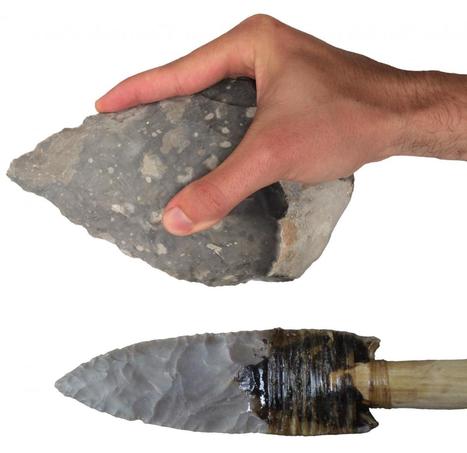Modern Biomechanical Techniques Used To Explore Ergonomic Design Of Earliest Human Tools
Kent’s School of Sport and Exercise Sciences (SSES) and School of Anthropology and Conservation (SAC) have collaborated on a research project to investigate the design of Lower and Middle Palaeolithic stone tools from a modern ergonomic perspective.
The research team examined nine muscles across the hand, forearm and shoulder during the use of four different stone tools types from the Lomekwian, Oldowan, Acheulean and Mousterian periods. They hoped to discover whether later tool types required lower levels of muscle activity, and were therefore more ergonomic to use. This would have helped explain why they replaced earlier technologies. It was discovered that technological changes did not always coincide with ergonomic improvements to the tools, meaning that ease-of-use cannot explain why these new tool types were invented.Using surface electromyography, a biomechanical technique capable of recording electrical activity in muscles, researchers explored how the use of different stone tools from the Palaeolithic period affected muscle activation in arms. The electrical activity is associated with muscle contraction, allowing professionals to tell which muscles are being used, how much they have contracted and how they are co-ordinated.
Dr. Alastair Key, a Palaeolithic archaeologist at SAC, worked with Dr. Samantha Winter and Ph.D. students Ian Farr and Rob Hunter, biomechanics experts at SSES, to run this research. The combined effort from the researchers made the project possible, with expertise and equipment from both schools contributing to the study.
Dr. Key said: ‘There’s huge potential for techniques and methods that have become commonplace in sports science to contribute to our understanding of early human behaviour. I can only hope that this research will lead to others undertaking similar projects in the future. It’s not just the investigation of muscle contraction levels, but elements of the whole musculoskeletal system are routinely investigated in detail by sports scientists, and yet archaeologists rarely utilise these techniques to shed light on early human behaviour’.
Dr. Winter said: ‘We usually use electromyography in our labs on athletes such as cyclists, footballers and wheelchair athletes to understand what limits their performance or how to improve their sporting skills. It was fascinating to see how these methods could help us understand something about what life was like millions of years ago and how the use and design of these tools developed.’ Their research paper ‘Muscle recruitment and stone tool use ergonomics across three million years of Palaeolithic technological transitions’ has been published in The Journal of Human Evolution




